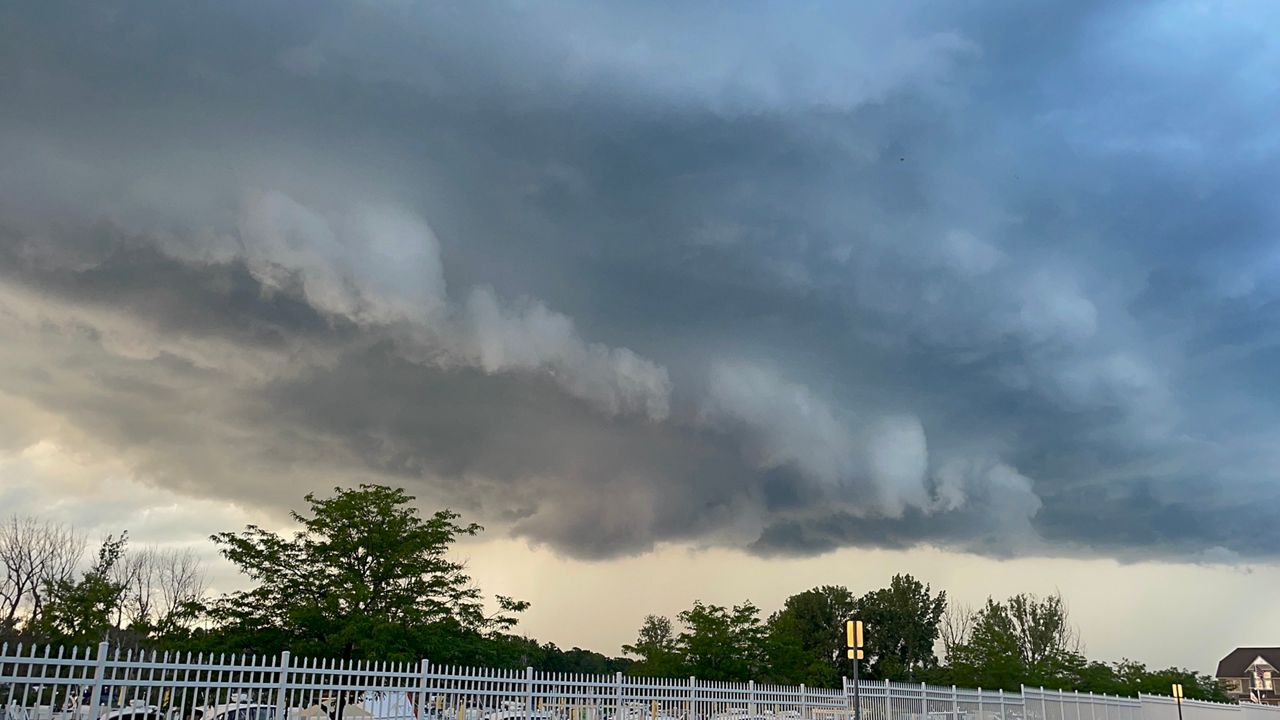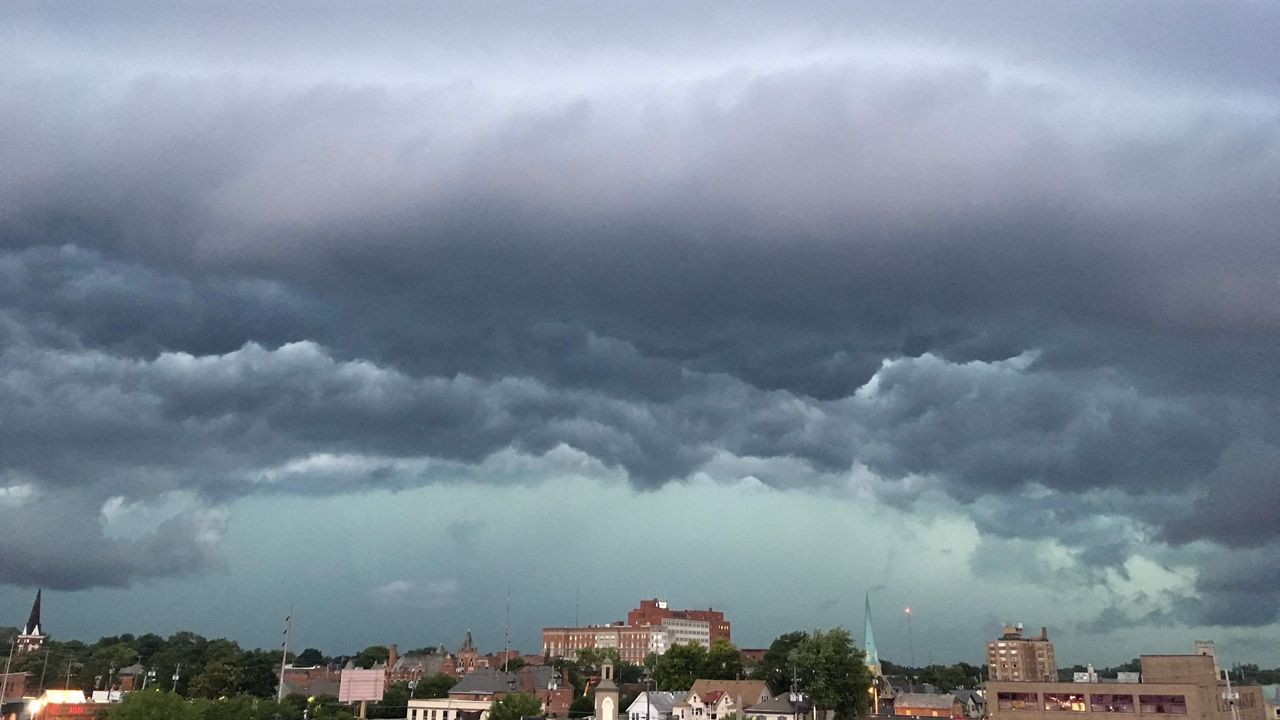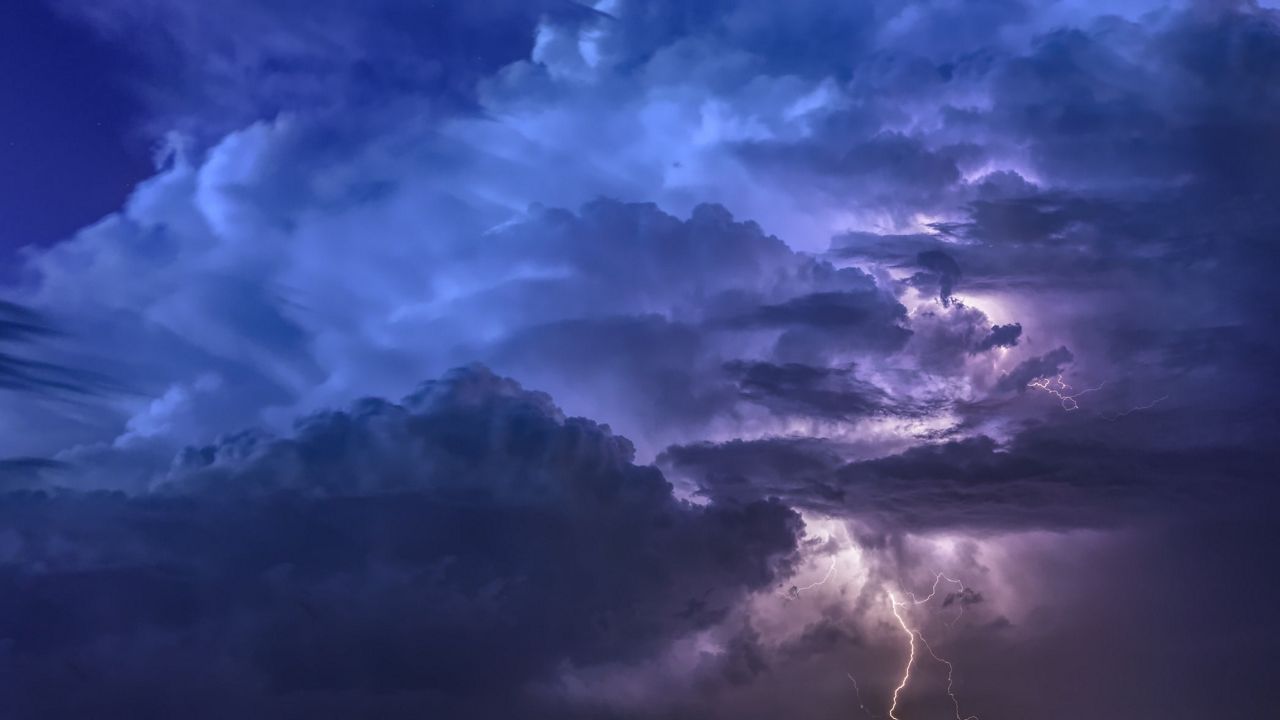Have you ever been enjoying a hot summer day and looked at the sky to see dark clouds in the distance?
It might not yet be raining overhead from where you are standing, but you can see thunderstorms off in the distance. Suddenly, the wind picks up and the temperature drops.
While it still might not yet be raining, you can tell the weather is changing.
If this scenario sounds familiar, you have experienced the effects of a thunderstorm’s outflow boundary.

To understand thunderstorm outflow, we need to understand some minor details about how a thunderstorm develops.
Instability, often caused by a difference in temperature, and some sort of lifting, are key ingredients needed in creating a thunderstorm.
Warm air at the surface lifts and rises through the developing storm, displacing rain-cooled, denser air aloft.
The cooler air descends through the storm and reaches the surface. Warm air at the surface continues to rise, allowing the cooler, denser air to disperse outwards ahead of the developing thunderstorm. The furthest extent of the outreaching cool air is referred to as an outflow boundary or a gust front by meteorologists.
Think of water droplets falling onto a tabletop and splattering outward from where the drop hits the table. This is the same sort of process occurring with thunderstorm outflow, but on a much larger scale.

Outflow boundaries can be identified with the appearance of a shelf cloud or a roll cloud with approaching thunderstorms.
Additionally, an outflow boundary can sometimes trigger new thunderstorm development ahead of the initial storm.
The next time you spot dark clouds in the distance followed by gusty winds and a sudden cool down, you know the outflow boundary has arrived.
Our team of meteorologists dives deep into the science of weather and breaks down timely weather data and information. To view more weather and climate stories, check out our weather blogs section.



